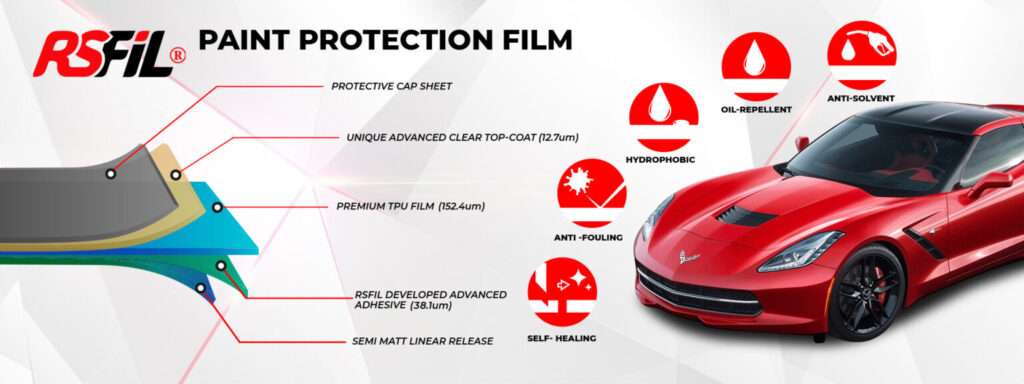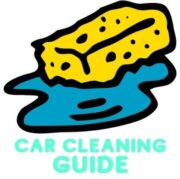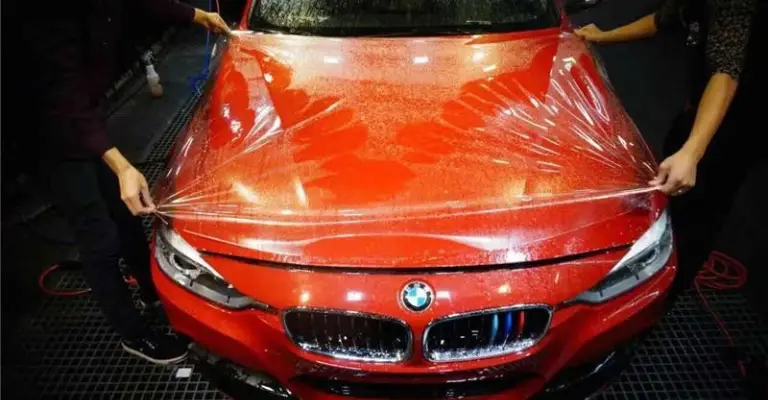Last Updated on August 31, 2023 by Chase Manhattan
When it comes to auto detailing, most car owners might be familiar with basics like detailing or waxing their car. However, a relatively obscure concept – Paint Protection Film (PPF) for cars often goes unnoticed. But what is PPF for cars really? And why is it something that you, as a driver, may need to consider for your vehicle more seriously than you ever have?
Touted as the auto industry’s best kept secret, PPF offers a comprehensive toolkit for maintaining vehicle paintwork in pristine condition.
Dive into this article and discover what PPF for cars is all about, exploring unexpected benefits, learning more about it, and resolving your queries about this exceptional car care solution. Buckle up for an in-depth joyride!
- How to Clean Car Carpets Quick and Easy - July 10, 2024
- Can You Touch Up Clear Coat? Yes and No (Here’s Why) - November 25, 2023
- How To Wax A Car By Hand: A Comprehensive Guide - November 14, 2023
Quick Navigation
What Is A Paint Protection Film?
Paint Protection Film, also known as PPF, is a thin, transparent material applied to your car’s exterior surfaces. Its primary function is to shield your car’s paintwork from potential damage such as scratches, rock chips, chemical stains, bug splatter, or hard water spots, and swirl marks.
PPF is safe to apply on new cars and can be easily removed when necessary. It offers long-term, invisible protection, keeping your vehicle looking brand new for a long time. PPF technology has been around for over two decades, and its evolution has brought about more advanced and efficient films.
Pros and Cons of Paint Protection Films
Like any other product, PPF has its advantages and disadvantages. Understanding both sides will help you make an informed decision about whether it’s the right choice for your vehicle.
| Aspect | Benefits of PPF | Disadvantages of PPF |
|---|---|---|
| Enhanced Finish | Offers gloss and matte finishes for customizable look. | Quality variation; research needed for best results. |
| Reduced Adhesive Marks | Proprietary adhesive prevents glue marks and orange peel. | Quality of installation affects outcome. |
| Chemical and Corrosion Protection | Four-layer protection against contaminants and stains. | Not all PPFs offer equal levels of protection. |
| Self-Healing Ability | Minor scratches can be repaired through heat application. | Self-healing effectiveness varies by brand. |
| High-Temperature Resistance | Blocks UV and IR radiation, maintaining visibility. | UV/IR protection varies; not all films offer this. |
| Consider Alternatives | Alternative options like nano ceramic coatings available. | Ceramic coatings may not protect against all damage. |
| Cost and Quality Considerations | Quality varies among PPF products. | Research and evaluation necessary for best choice. |
Benefits of Paint Protection Film
- Enhanced Finish: High-quality PPFs like Ceramic Pro Kavaca offer both gloss and matte finishes. This flexibility allows you to customize your car’s exterior look and appeal to match your preference.
- Reduced Adhesive Marks: Unlike some PPFs that leave glue marks after installation, Kavaca’s proprietary adhesive doesn’t leave these marks or create an orange peel finish.
- Superior Chemical and Corrosion Protection: High-quality PPFs like Kavaca feature four layers of material, each providing barriers against harmful contaminants or chemicals. This level of protection reduces paint damage due to stone chips and offers superior stain resistance.
- Self-Healing Ability: Top brands of car paint protection have self-healing properties. This means that minor scratches can be fixed by a detailer, simply by applying direct heat.
- High-Temperature Resistance: Advanced PPFs utilize nanotechnology to provide a heat shield that blocks UV and IR radiation from penetrating the vehicle’s surface materials. This feature prevents headlights from fogging or fading, maintaining your on-road visibility.
Related read: How To Protect Car Paint

Disadvantages of Paint Protection Film
- Quality Matters: Not all PPFs are created equal. Some are simply better and superior to others. It’s essential to do your due diligence before having a professional place any film or coating on your car.
- Consider Alternatives: There are several professional nano ceramic coatings that will provide superior protection for years. While they may not be as good as PPF for protecting from rock chips and larger road debris, they offer multiple benefits.
Related article: What Is Clear Coat?
What Is The Cost of PPF?
For a paint protection film application, the cost varies depending on several factors, including the area of the car you want to cover, the brand and quality of the PPF, and the level of experience of the installer.
Here’s an (estimated) example of the potential costs involved with a paint protection film installation:
| Vehicle Size | Partial Front End | Full Front End | Full Vehicle Wrap |
|---|---|---|---|
| Small Car | $500 – $800 | $800 – $1,200 | $2,000 – $3,500 |
| Midsize Car/SUV | $600 – $900 | $1,000 – $1,500 | $2,500 – $4,000 |
| Large SUV/Truck | $700 – $1,000 | $1,200 – $1,800 | $3,000 – $5,000 |
Is PPF Worth It?
The question of whether PPF is worth it depends on your specific needs and priorities. If you value your car’s appearance and want to maintain its resale value, then investing in PPF is a wise decision. It offers long-term protection for your car’s exterior, shielding it from potential damage and keeping it looking new for longer.
Read more: What is clear coat protectant?

What To Expect When Installed Professionally
Professional installation of PPF involves a multiple-stage process where the film is fitted, cut, placed, and then activated by a liquid spray. The installer uses a squeegee to apply the film to the painted surface. This is when the adhesive goes to work to attach to the substrate.
Can PPF Be Installed DIY?
While it’s possible to find DIY kits for PPF installation, it’s generally recommended to have it installed by a professional. This is because the process requires precision and expertise to ensure a flawless finish. Incorrect installation can lead to peeling, yellowing, or air bubbles, which can affect the film’s performance and longevity.
Are There Alternatives to PPF?
Yes, there are several alternatives to PPF, including ceramic coatings and vinyl wraps. Ceramic coatings bond with the car’s paint, giving it a glossy finish and water-repelling properties. On the other hand, vinyl wraps cover the whole car with a thin layer of vinyl, offering a wide range of colors and designs for a completely new look.
Related Questions
Can Paint Protection Film Be Applied To A Headlight?
Absolutely. In fact, applying PPF to high-exposure areas like headlights is highly recommended. It protects these areas from rock chips and other road debris, extending their lifespan and performance.
Can Paint Protection Film Be Removed?
Yes, PPF can be easily removed when necessary. However, once removed, the same film cannot be reapplied.
When Should You Opt for A PPF Installation?
If you value your car’s exterior appearance and want to maintain its resale value, then you should consider a PPF installation. It’s also recommended for new cars and high-end vehicles where the cost of repairing exterior damage can be high.
Can PPF Be Applied to Waxed or Ceramic Coated Cars?
Yes, PPF can be applied to cars that have been waxed or coated with ceramic. However, it’s essential to ensure the surface is thoroughly cleaned and prepared before the PPF installation to ensure proper adhesion.
In conclusion, PPF is an excellent investment for car owners who want to maintain their vehicle’s appearance and value. It offers long-term protection, enhances the car’s finish, and provides superior resistance to chemicals and corrosion. However, to get the most out of your PPF, it’s crucial to have it installed by a professional and maintain it properly.



